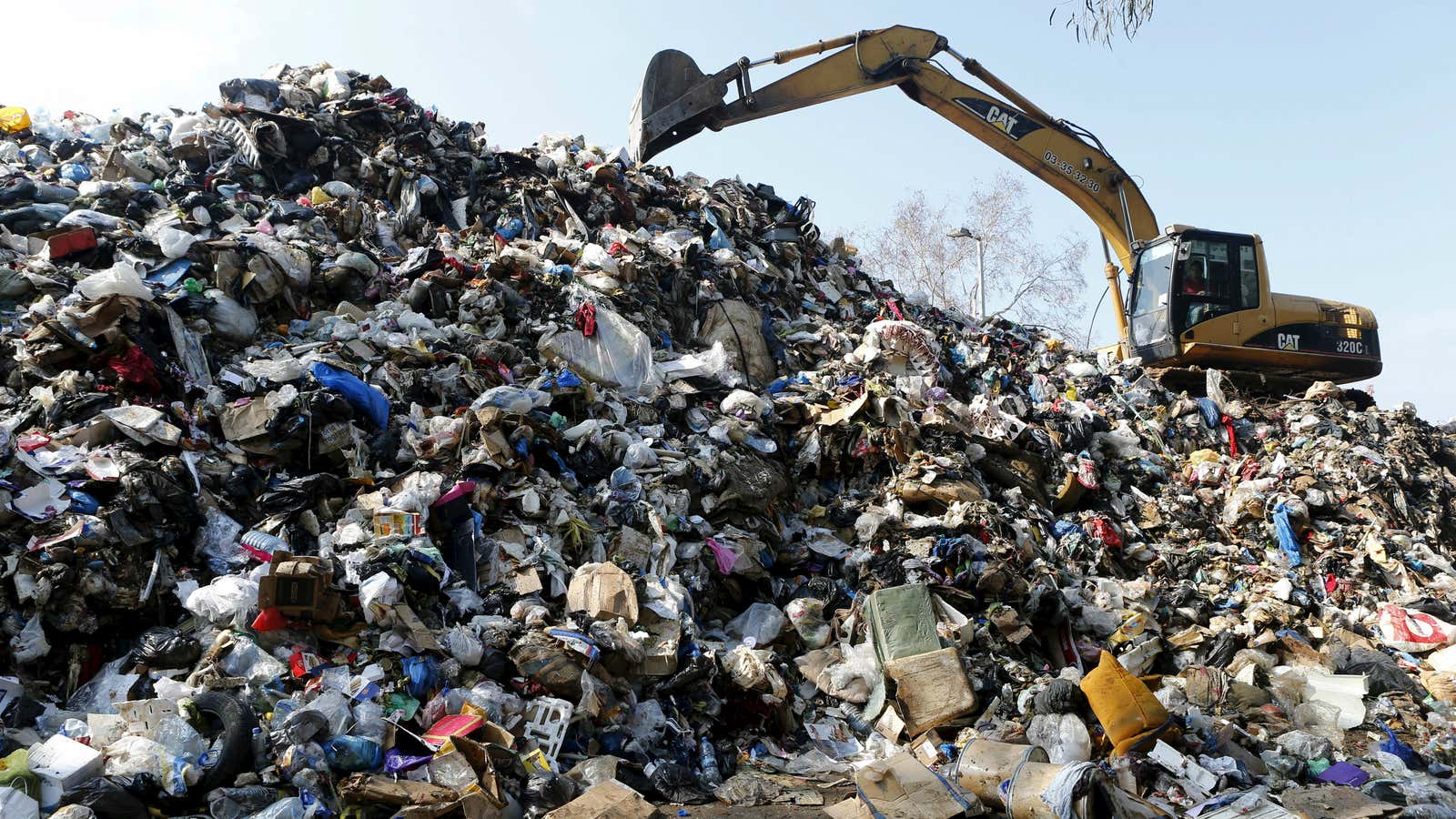Maybe, in the near future, calling something a “dumpster fire” won’t carry the flavor of a pejorative that it does now.
The practice of burning trash to generate energy works well for Sweden, but in the US the idea remains controversial. That might be changing. Officials in seven Idaho counties have voted to give it a shot, approving a plan to burn garbage and methane gas from at least one regional landfill.
The idea is simple. Rather than leave garbage to sit dormant and decompose for years at a local dump, communities can burn the waste in plants. The heat from the fire converts water into steam, which is then sent through a turbine generator to produce electricity.
In Idaho, the plan is to begin construction on a federally-approved combustion facility in March, but the overall operation likely won’t be profitable until 2023, according to local media.
“The gas is going to be there whether we like it or not,” one local official told the Idaho Mountain Express. “Instead of burning coal, why not support our electric grid with the methane, which is a byproduct of our waste?”
There are a few reasons some energy experts prefer investments in solar (paywall) and wind power to the trash-incineration method. For starters, burning garbage emits pollutants such as nitrogen oxides, sulfur dioxide, mercury compounds, and dioxins. In the 1990s, the US Environmental Protection Agency released regulations to combat those emissions—which forced many garbage-burning facilities to be retrofitted with new pollution control systems or shut down completely. (Idaho’s planned facility would be in compliance with these regulations.)
Another reason energy experts don’t particularly like trash incineration is the thinking that if society invests in a system that depends on municipal waste to operate, it makes it that much more difficult to encourage reducing waste.
It doesn’t help that the second biggest contributor to municipal waste, food, translates to the smallest amount of energy generation, according to the EPA.
In Sweden, people burn as much garbage for energy as they recycle, thanks in part to a landfill tax that incentivizes rerouting trash to energy-recovery facilities. It’s also a country that gets 44% of its energy from hydro, and most of the rest from nuclear and wind. Only about 1% of garbage makes it to the landfill, as most of it is recycled or used to create electricity. The Swedes even import garbage—about 700,000 tons of it each year—for electricity generation. That makes the country relatively green compared to the US, which generates only 8% of its energy from hydro and sends 54% of its garbage straight to landfills, burning only 12% for energy, according to government figures.
